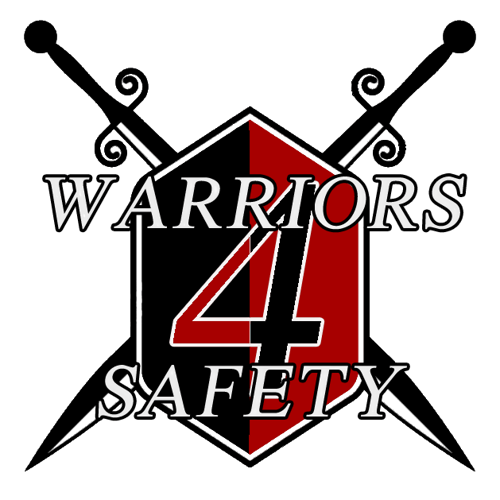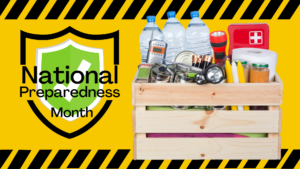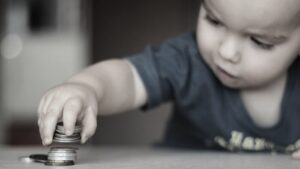Burn Awareness Tips and Prevention
The 2022 theme is Burning Issues in the Kitchen!
As 75 to 80 percent of burn injuries happen in and around the workplace or at home, it is important for you to be aware of risks and take precautions to make your workplace and home safe for you and your family. Each year in the United States, 1.1 million burn injuries require medical attention. Approximately up to 4,500 people die every year in the U.S. from burns and related infections. Included below is information from the American Red Cross, Americburn.org, National Safety Council, ASSP, and Medic First Aid to help you learn more about burns, how to prevent them and what to do if you or a family member or co-worker sustains a burn.
What is a burn?
Very simply, a burn is a damage to the skin and underlying tissue. It is caused by heat, chemicals, radiation, or electricity, and may damage or destroy skin cells. Deeper burns may involve fat, muscle, or bone. Scalds result when one or more layers of skin are destroyed by contact with hot liquid or steam.
The depth of injury depends on two things:
- temperature to which the skin is exposed
- length of time the skin is exposed to the burning substance
The higher the temperature, the shorter amount of time is required to inflict a burn injury.
What are the most common causes of burns?
- Scalds– these types of burns result when the skin comes into contact with hot liquids (spilled liquids or food, hot bathwater)
- Contact burns– these burns result from contact of the skin with hot items, including flames
- Chemical burns– these burns result from contact of the skin with chemicals, or by ingestion of chemicals
- Electrical burns– these types of burns result when a person comes into contact with a source of electrical energy; including burns caused by electrocution and lightning strike
- Radiation burns- these types of burns result from contact with a source of radiation; may include overexposure i.e. sunburn
Burns may be classified according to the tissue damage (first, second or third degree) and also according to the mechanism of burn injury. Knowing the types of burns allows health professionals to tailor their treatment accordingly and predict which patients require more specialized care, as well as which patients are more at risk for complications.

First degree (Superficial)
- Causes sunburn, and minor scalds
- Generally heals in three to five days with no scarring
Characteristics of Injury:
- Minor damage to the skin
- Color: pink to red
- Painful
- Skin is dry without blisters
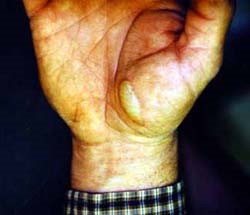
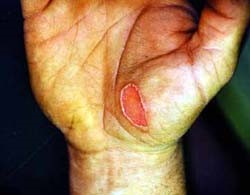
Second degree (Partial thickness)
- Damages but does not destroy the top two layers of the skin
- Generally heals in 10 to 21 days
- Does not require a skin graft
Characteristics of Injury:
- Skin is moist, wet, and weepy
- Blisters are present
- Color: bright pink to cherry red
- Lots of swelling
- Very painful
Third degree (Full thickness)
- Destroys all layers of the skin
- It May involve fat, muscle, and bone
- Will require skin graft for healing
Characteristics of Injury
- The skin may be very bright red or dry and leathery, charred, waxy white, tan or brown
- Charred veins may be visible
- Cannot feel touch in areas of full thickness injury

At what temperature can water burn a person?
Children and seniors sustain severe burns at lower temperatures and in less time than adults. Because their skin is thinner, they cannot react quickly to escape the hot water or they lack skin sensitivity due to other medical conditions. Water temperatures figured in both Celsius and Fahrenheit for those of you that have foreign-made water heaters.
Water temperature
- 68 degrees C/155 F
- 64 degrees C/148 F
- 60 degrees C/140 F
- 56 degrees C/133 F
- 52 degrees C/127 F
- 51 degrees C/124 F
- 48 degrees C/120 F
- 37 degrees C/100 F
Time required for a third-degree burn
- 1 second
- 2 seconds
- 5 seconds
- 15 seconds
- 1 minute
- 3 minutes
- 5 minutes
- Safe temperature for bathing
How do I ensure safe water temperatures in my home?
To protect your family, you can apply one of these methods:
- The thermostat of a hot water heater can be set to deliver water at around 48 degrees Celsius(C) or 120 degrees Fahrenheit (F). Depending on the type of tank you have it is recommended that you consult an electrician.
- Devices, known as mixing valves or tempering valves, can be installed in the plumbing lines. These devices ensure that water is delivered at 48/120 degrees C/F by mixing in cooler water as needed.
Devices, known as anti-scald devices, can be installed at individual taps or faucets. If the water gets too hot, a valve inside these devices slows the water to a trickle. You then restart the water by mixing more cold water into the tap.
To install these devices, it is recommended that you contact your local plumber. It is important to note that potentially harmful bacteria can grow in water heaters if set too low. Do not lower the temperature of your household water heater below 48/120 degrees C/F. Those with weak immune systems, lung and respiratory problems, or organ transplants should check with their doctors before reducing the temperature of the water in their homes. Most families, however, can safely lower their water temperature to 48/100 degrees C/F without concern for other health risks as well as electric.
Burns can also come from gases and liquids. Here are the flashpoints for some common liquids and gases found around the home or workplace:
Flammables and Combustibles
- Safety Solvents
- Diesel Fuel
- Paint Thinner
- Kerosene
- Turpentine
- Gasoline
- Propane
Flashpoint
- 100-140°F
- 125°F
- 105°F
- 100°F
- 95°F
- -45°F
- -156°F
How can I help prevent burns from happening to me or my family?

- Turn the pot handles toward the back of the stove. Keep long cord appliances toward the back of the counter.
- Keep children at a safe distance from all hot items by using playpens, high chairs, etc.
- In a hotel, if there is a fire alarm check the door or knob with the back of your hand for heat before opening doors
- Don’t cook with children underfoot. Create a safe zone.
- Never hold an infant or child while pouring or drinking hot liquids.
- Turn the water heater temperature down to 120 degrees Fahrenheit.
- Always check the water temperature before placing the child in the tub.
- NEVER leave your child unattended in the kitchen or bathtub.
- Put sunscreen on you and your children.
- Use safety plugs to cover electrical outlets.
- Never spray charcoal lighter fluid or gas on charcoal that has already been lit.
- Keep a screen or glass cover over your fireplace.
- Keep matches and lighters in a locked box, out of reach of children.
- Install smoke alarms on every level and in every sleeping area of your home. Test them once a month and replace batteries when necessary.
Always place hot items on a secure surface to avoid accidental tipping. - Never, never bury hot barbecue coals- extinguish with water first.
First Aid
It makes a huge difference in the severity of the injury on what you do to treat the burn in the first few minutes after it occurs!
Immediate Treatment for Burn Victims
- “Stop, Drop, and Roll” to smother flames.
- Remove all burned clothing. If clothing adheres to the skin, cut or tear around the burned area.
- Remove all jewelry, belts, tight clothing, etc., from over the burned areas and from around the victim’s neck. This is very important; burned areas swell immediately.
What should I do if I or someone I know is burned?
1. Cool burn with water
Immediately pour cool water on burns or soak them for at least three to five minutes (20 minutes for a chemical injury). DO NOT USE ICE. Ice may cause more damage, stick to the burn and remove the skin. For scalds, immediately remove hot, wet clothing.
2. Do not apply ointments or butter
Use only cool water on burns. Ointments, butter, creams, or salves allow the burn to retain heat, may cause infection, and may hinder medical evaluation.
3. Cover the burn
Apply a soft, clean, dry dressing, bandage, or sheet to the burned area. Do not break blisters, as this could let germs into the wound. Cover burn victims and keep them warm.
4. See a doctor
Adults should see a doctor if the burn is larger than the size of a quarter. Infants, young children and the elderly are endangered by even small burns and should see a doctor.
Utilize some of these safety tips you too can prevent or treat burns. Want to learn more about how to treat a burn you can sign up and attend
For more training: Next CPR/First Aid class contact me at 575 607 6898.
Information provided by the American Red Cross, Medic First Aid CDC, NSC, Ameriburn.org, ASSP and ADAM
Safety Alerts are a publication of information from various sources to share with the community. The information contained in this newsletter has been obtained from sources believed to be reliable, and the editors have exercised reasonable care to assure its accuracy. However, Ken does not guarantee that the contents of this publication are correct. We welcome topics of interest from our readers. Material may be rewritten to conform to newsletter space. The material should be addressed to Ken Oswald, Safety Manager, 583 US 70, Clovis NM 88101.
Ken O
